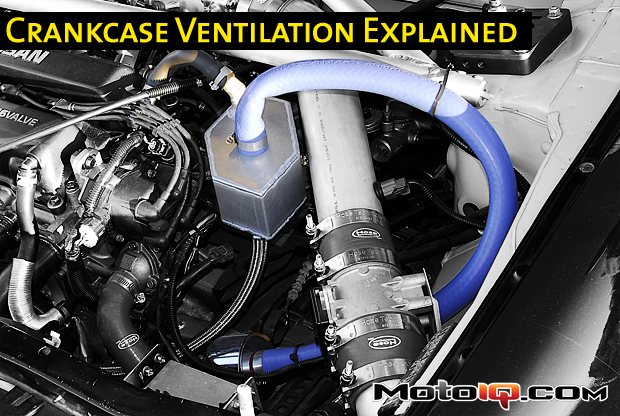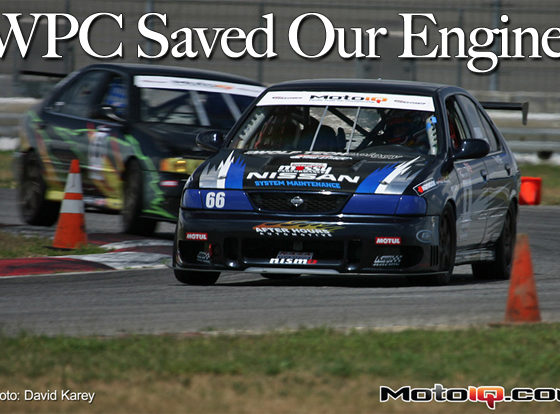 Crankcase Ventilation Explained – N/A Edition
Crankcase Ventilation Explained – N/A Edition
By Ben Fenner
If you’re reading this you’ve likely asked a question about crank case ventilation, catch can placement, correct PCV hose routing, or similar. Grab yourself a beverage of your choice, sit back and relax. Keep reading to have all of your questions answered.
To understand what you’re doing when you modify or repair the factory crankcase ventilation system you should know how the factory systems works first before diving into modifying it or fixing it. It might also be nice to understand the history and evolution of the crank case ventilation system. I’m going to be using the SR20DE/VE family of engines and will start with the early SR20DE system and work up from there.
Here’s the factory system:

Now let me explain what’s happening here. The piston rings don’t seal perfectly, so there is some air that gets by them and we call that blow-by. This blow-by air pressurizes the crankcase, causing major problems, such as oil seal failure, and needs to be dealt with. Introducing vacuum to the crank case is very good as it promotes ring seal and reduces windage losses (drag on the rotating crank caused by a cloud of oil in the crank case). Since having vacuum in the crank case is good and having pressure there is bad, we must get rid of the pressure somehow.
The air comes in contact with a lot of oil in the crank case and basically turns into a mix of air and oil (along with a little bit of gasoline and water). This air/oil mix is represented by the red arrows in the crank case and as oil gets removed throughout the system I’ve made the color shift towards blue. I even showed little oil droplets condensing out of the air as it goes up through the “catch can” oil separator. I didn’t show them everywhere in all the baffles, but you can imagine the same thing happening everywhere you see baffles.
The amount of air and oil can be quite significant. To handle this large quantity of air and oil, Nissan put in two important pathways for the pressure to escape from the crank case to all the air to properly evacuate. On the left, the air and oil can escape the crank case up along the timing chain portion of the block and into the valve cover. This is the usual pathway for the air to take.
On the right, the oily air can escape the crank case (in times where there is excessive pressure to evacuate) through the provision in the side of the block, up through the oil separator (catch can) leaving the crank case.
The goal is to have a vacuum in the crank case. This is accomplished on some vehicles with a dry sump oil system, but on regular vehicles the intake manifold is used for the source of vacuum. Basically the engine is setup to consume its own blow-by gasses. Not a super great idea because it coats the intake in oil residue and lowers the effective octane of your fuel, but it certainly is efficient, practical and good for the environment.
How does blow-by lower your octane? Blow-by gasses with any amount of oil in them will lower the effective octane rating of your fuel because the vaporized oil will ignite at lower energy levels than 87 octane (R+M/2) gasoline. The more of it you allow to enter the cylinder, the more you will have to worry about detonation. This is usually not a big worry for naturally aspirated engines, but obviously forced induction is a different story.
If you’ve been paying attention we now have the blow-by gasses up and out of the crank case and in the valve cover now. The gasses are going to continue on through the small PCV (positive crank-case ventilation) port at the top-left corner of the valve cover which includes a one-way check valve so things can only flow out (and not in). The gasses flow out of the PCV port and into the intake manifold where they are sucked back into the engine to get consumed and pushed out of the exhaust. Simple enough.
Now the gasses have a bit of oil mixed in with it, on its way out of the valve cover it passes through a labyrinth of baffles designed to help condense the oil and collect the oil from the air. The more surface area the oil has to cling on to the more oil will separate from the air. The oil that is collected drains back down onto the valvetrain and eventually returns to the oil pan.



